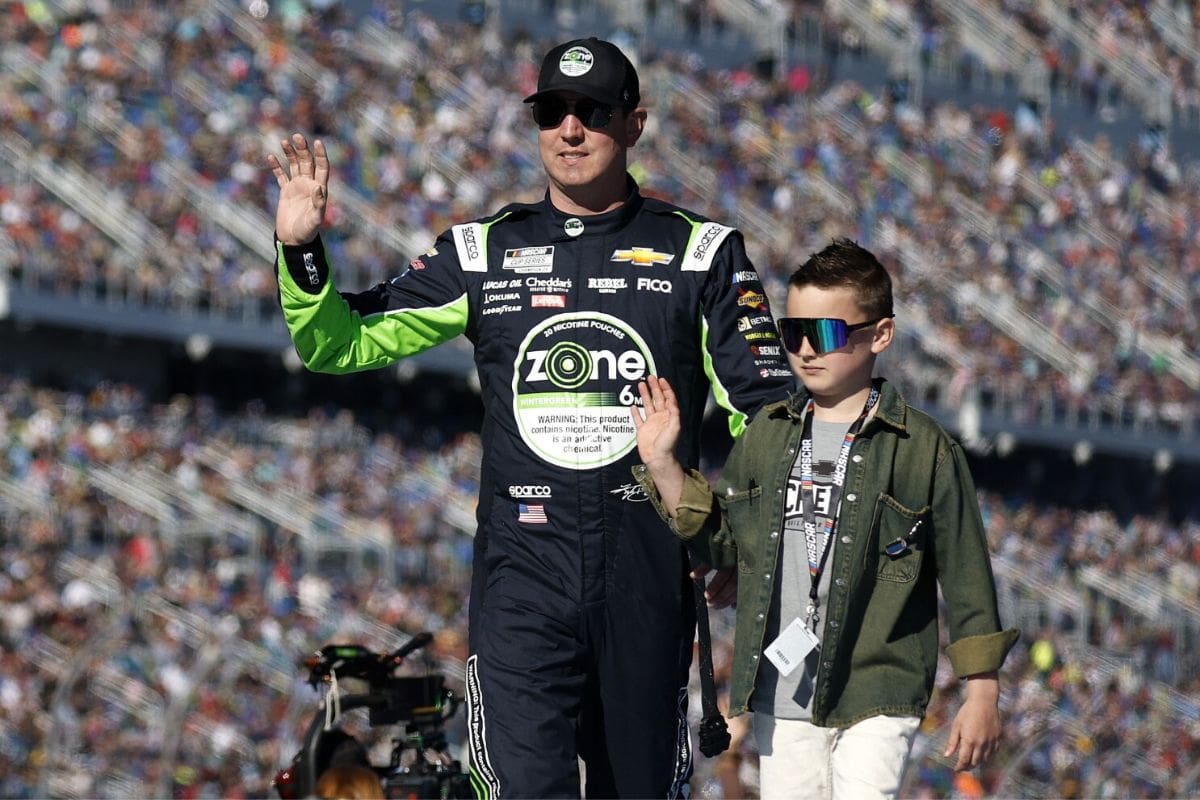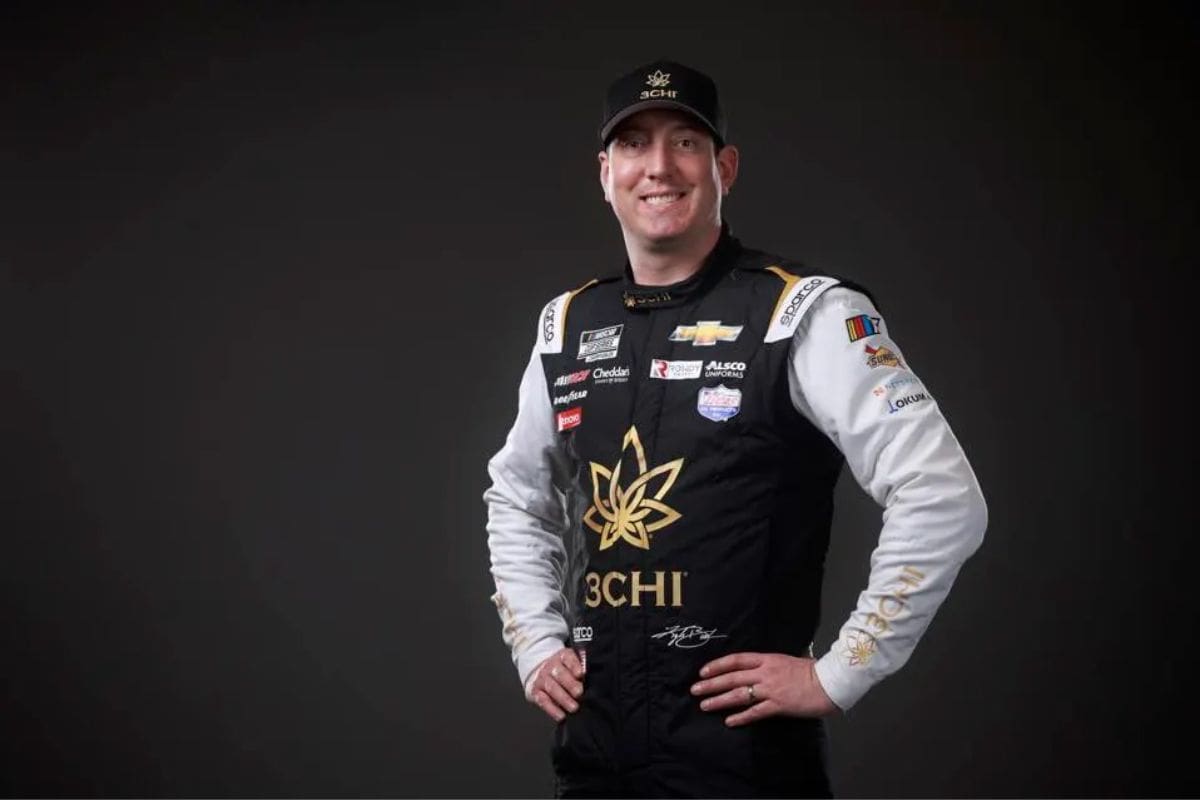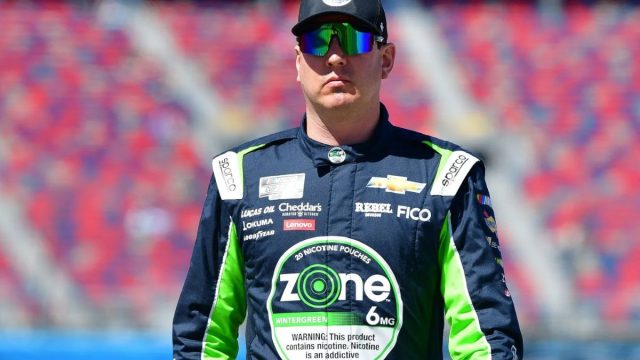Kyle Busch: ‘Rowdy’ Return: Kyle Busch’s 2024 season is marked by a compelling mix of competitive fervor and escalating tensions. Remarkably, his early-season setbacks and frictions with fellow drivers Denny Hamlin and Christopher Bell have set a turbulent backdrop. Despite a commendable second-place finish at the Light Clash and a strong showing in Atlanta, Busch’s pursuit of victory for the #8 RCR team persists. Kevin Harvick’s insights into Busch’s growing frustrations suggest a potential resurgence of his aggressive ‘Rowdy’ persona, aiming to recalibrate his psychological approach to racing. As on-track conflicts with Bell intensify, the intricacies of their dynamic promise to shape an unpredictable journey ahead, piquing the curiosity of NASCAR enthusiasts about the evolving narrative.
Key Takeaways
- Kyle Busch’s mounting frustrations could signal a return to his aggressive ‘Rowdy’ persona on the track.
- Early season tensions with teammates Denny Hamlin and Christopher Bell have intensified, potentially fueling Busch’s competitive edge.
- Kevin Harvick’s insights suggest Busch’s dissatisfaction with his performance may drive a recalibration of his racecraft.
- The relationship and rivalry with Christopher Bell, stemming from their time at Kyle Busch Motorsports, add complexity to Busch’s current situation.
- The #8 RCR team’s pursuit of top performances, amid external pressures and fan expectations, is testing Busch’s resolve and mental fortitude.
The Start of Kyle Busch’s Rocky 2024 Season
Starting the 2024 NASCAR Cup Series, Kyle Busch faces a formidable challenge, characterized by competitive fervor yet marred by early setbacks and escalating tensions within the racing community. His journey, punctuated by an intense rivalry and on track battles, particularly with Denny Hamlin and Christopher Bell, underscores a season that has started under the harsh glare of the media spotlight. Despite a commendable second-place finish at the Light Clash and a strong performance in Atlanta, the #8 Richard Childress Racing (RCR) team’s strategy to clinch the top spot remains tricky, intensifying the performance expectations placed upon them.
The dynamics between drivers have been notably fraught. The playful taunting from Hamlin contrasts sharply with the heated exchange with Bell at Circuit of the Americas (COTA), reflecting a broader shift in driver dynamics. This tension not only revives the ‘Rowdy’ Busch persona but also hints at evolving team strategies as they navigate these interpersonal challenges. The incidents highlight an essential aspect of modern NASCAR: the balance between competitive aggression and sportsmanship, a balance that Busch seems to be recalibrating in real-time.
Moreover, the heightened media spotlight on these rivalries and altercations magnifies the study on Busch and his team’s responses, both on and off the track. This attention, while adding pressure, also sets a stage for Busch to demonstrate resilience and adaptability in his driving tactics and interpersonal engagements. As the season progresses, how Busch and the RCR team adjust their strategies in response to these early challenges will be critical in meeting the lofty performance expectations set before them.

Insight into Busch’s Growing Frustrations
Kevin Harvick’s observations on the Harvick’s Happy Hour Podcast shed light on Kyle Busch’s mounting frustrations, revealing a season increasingly characterized by confrontational incidents and a palpable dissatisfaction with his performance outcomes. Harvick’s insights into Busch’s demeanor suggest not just a series of performance struggles but a deeper emotional turmoil that is affecting his approach to the track. The narrative highlights a potential comeback, fueled by these frustrations, that could see Busch return to his more aggressive, ‘Rowdy’ persona, reminiscent of his earlier career phases.
Kevin Harvick said:
“I always find these as interesting scenarios because you always wonder, like, I wonder now, it makes me think about how Christopher Bell is going to react. Because he also spun Larson out too.”
The discussion on the podcast, which also involved co-host Mamba Smith, explored the psychological impact of such confrontations. Drawing parallels with other drivers like Ross Chastain, whose racing dynamics evolved post-encounters with seasoned drivers, Harvick speculated on how Busch’s recent altercations could recalibrate his racecraft. This speculation points towards a significant shift in Busch’s approach, potentially harnessing his frustrations as a catalyst for refining his aggression on the track.
Moreover, the emotional turmoil highlighted by Harvick indicates a deeper psychological struggle within Busch, stemming from not just this season’s performance struggles but possibly from the evolving nature of racing dynamics itself. The conversation suggests that Busch’s frustrations, if channeled correctly, could lead to a formidable comeback, reshaping his racing strategy and mental approach to competitions.
The Intensifying Conflict: Busch vs. Bell
The 2024 EchoPark Automotive Grand Prix became the latest battleground for Kyle Busch, where a contentious encounter with Christopher Bell escalated their rivalry, marking a pivotal moment in Busch’s tumultuous season. This incident not only intensified their personal conflict but also spotlighted the inherent complexities of driver dynamics within the high-stakes environment of professional racing.
Analyzing this moment reveals several key aspects:
- Race Incidents as Catalysts: The contact between Busch’s #8 Chevy and Bell, resulting in Busch spinning out, underscores the thin line between competitive racing and contentious encounters. Such incidents act as flashpoints, exacerbating existing tensions and creating new rifts.
- Emotional Reactions on Display: Busch’s visible frustration post-race, culminating in a confrontation with Bell, illustrates the emotional volatility inherent in the sport. These reactions are not merely personal but reflect the immense pressure and expectations placed on elite drivers.
- On-Track Rivalries Extending Off-Track: The post-race tensions between Busch and Bell highlight how on-track rivalries often spill over, affecting interactions and perceptions off the track. This dynamic adds a layer of complexity to driver relationships, influencing team dynamics and public perceptions.
- Public and Peer Observations: Comments from Harvick’s Happy Hour podcast and remarks by Mamba Smith about Bell’s reaction to Busch’s displeasure emphasize the role of public and peer scrutiny in shaping and amplifying driver conflicts. These observations contribute to the narrative, influencing fan engagement and media coverage.
A Glimpse into the Past: Busch’s History with Bell
Diving into the complex history between Kyle Busch and Christopher Bell reveals a relationship forged and tested within the competitive confines of Busch’s racing program. This intricate backdrop, accentuated by their shared experiences at Kyle Busch Motorsports (KBM), is vital in understanding the dynamics at play between these two drivers. Bell’s development under the KBM umbrella is a proof to the program’s ability to nurture talent, guided markedly by Busch’s direct involvement. As Bell ascended through the ranks, the mentorship dynamics between him and Busch evolved, highlighting a blend of guidance, competition, and mutual respect that is rare in the high-stakes world of racing.
The competitive dynamics inherent to racing, particularly within a team setting, further complicated their relationship. While both drivers aimed to outperform not just each other but the entire field, their shared goals necessitated a delicate balance between rivalry and cooperation. This balance was essential in maintaining healthy team dynamics, ensuring that internal competition did not detract from the team’s overall objectives.
Personal connections, fostered over time, added another layer to their relationship. The incident that sparked public attention was out of character for Bell, who appeared surprised by Busch’s overt displeasure. This moment of tension was perhaps indicative of the pressure points within their relationship but also highlighted a mutual acknowledgment of each other’s competitive spirit and expectations.
The Unpredictable Future: What Lies Ahead for Busch
As speculation mounts regarding Kyle Busch’s future in NASCAR, the racing community excitedly anticipates the unfolding dynamics and potential for further on-track confrontations. The recent incident with Bell underscores the intensity of competition and Busch’s unwavering resolve to dominate. Given the backdrop of increasing pressures and expectations, several key factors are likely to shape Busch’s path forward:
- Busch’s Behavior: Known for his fiery demeanor, Busch’s reactions on and off the track will be closely watched. His ability to channel his competitive spirit constructively could be pivotal in steering the challenges ahead.
- Team Dynamics: The synergy within the #8 RCR team will be pivotal. As tensions rise, maintaining a cohesive team environment while harnessing Busch’s aggressive drive could spell the difference between friction and triumph.
- Championship Hopes: With his sights set on reclaiming the top spot in the NASCAR Cup Series, every race becomes a critical battleground. Busch’s strategic decisions and on-track performance will be instrumental in shaping his championship trajectory.
- External Pressures: Media scrutiny and fan reactions play a substantial role. How Busch manages the spotlight and engages with his fanbase amidst the highs and lows will influence his mental fortitude and public perception.

As the season unfolds, these elements will converge to craft a narrative filled with anticipation and unpredictability. Busch’s journey will not only test his resolve but also offer a compelling spectacle to NASCAR enthusiasts, underscoring the sport’s relentless drive and the thin line between rivalry and respect.
News in Brief
Kyle Busch’s turbulent start to the 2024 season epitomizes the challenges and dynamics inherent in professional racing. The escalating conflict with Christopher Bell underscores the intense competitiveness and personal rivalries that can shape a driver’s career trajectory.
Historical context reveals this is not an isolated incident, suggesting such disputes may influence future performances and team dynamics. As the season progresses, the capacity of Busch to navigate these complexities will be pivotal in determining his success and legacy within the sport.
Our Reader’s Queries
Q: Why is Kyle Busch called rowdy?
A: Kyle Busch, often called “Shrub” due to his familial connection with Kurt Busch, also adopts the moniker “Rowdy,” inspired by the character Rowdy Burns from the film “Days of Thunder.
Q: Why did Toyota let Kyle Busch go?
A: David Wilson, the president of Toyota Racing Development, described Kyle Busch’s playoff elimination at Bristol due to an engine failure as “the worst nightmare imaginable.” He emphasized the disappointment for both himself and the team, acknowledging that they had cost Busch a shot at his third championship.
Q: What kind of car does Kyle Busch drive?
A: In the 2024 NASCAR Cup Series, Kyle Busch continues to pilot the No. 8 Chevrolet Camaro ZL1 for Richard Childress Racing, marking his second year with the team and his 20th season of full-time competition in the series. He reunites with crew chief Randall Burnett for another campaign.
Also Read: How Kyle Busch Stalled the Career of a 17-Year-Old NASCAR Talent

